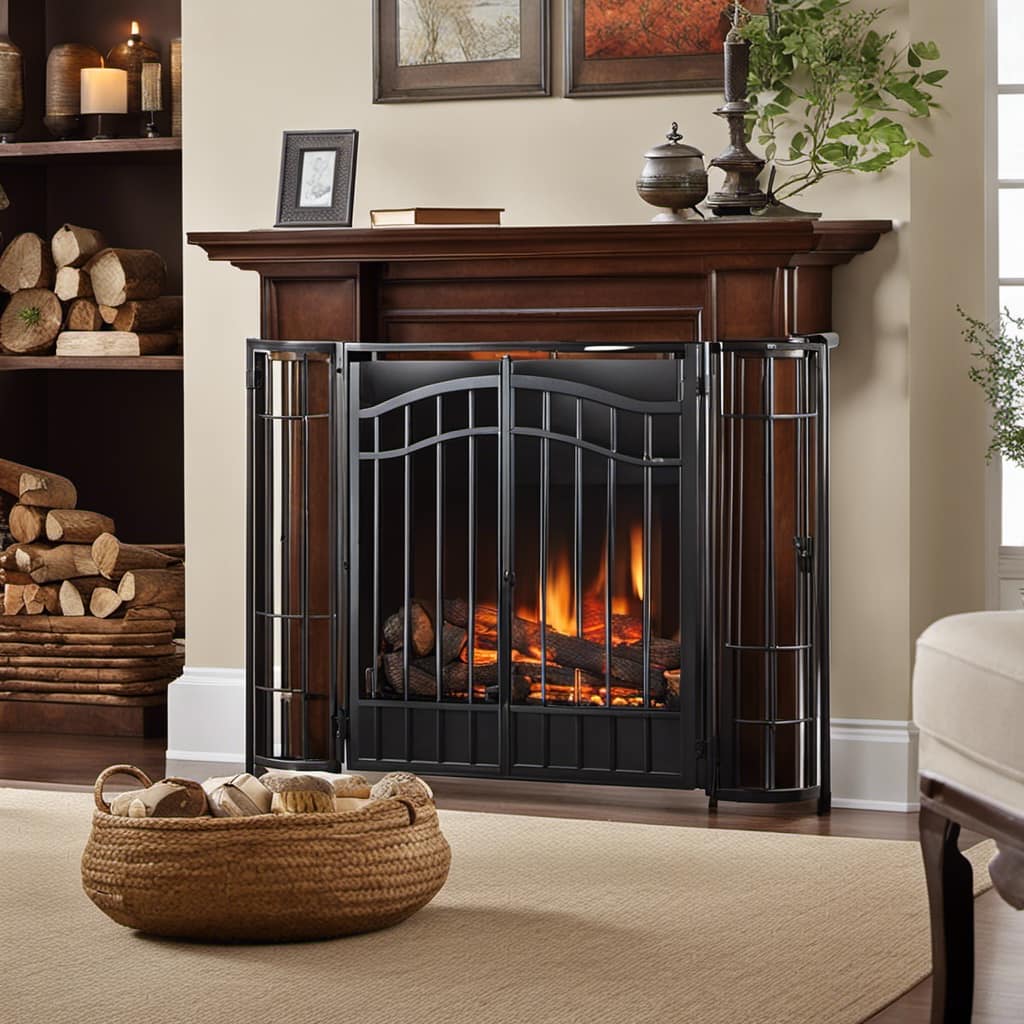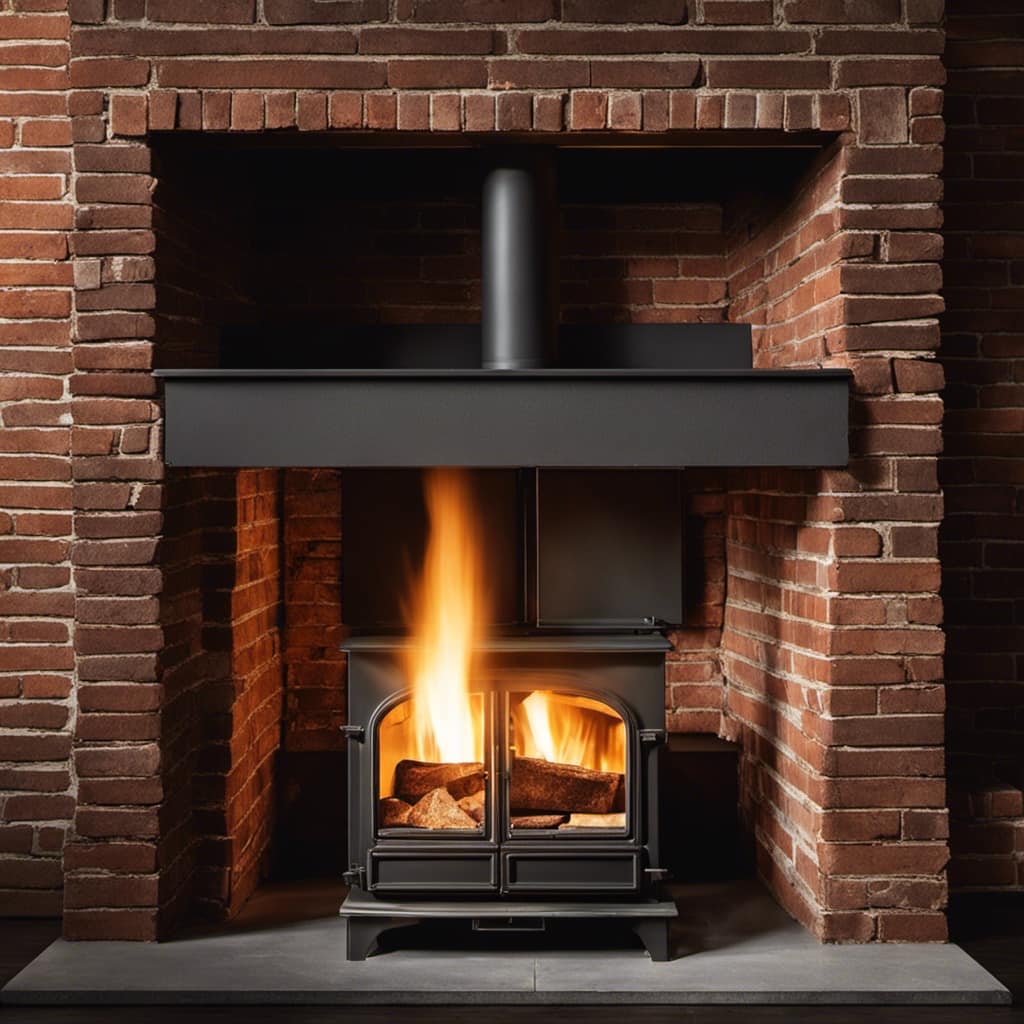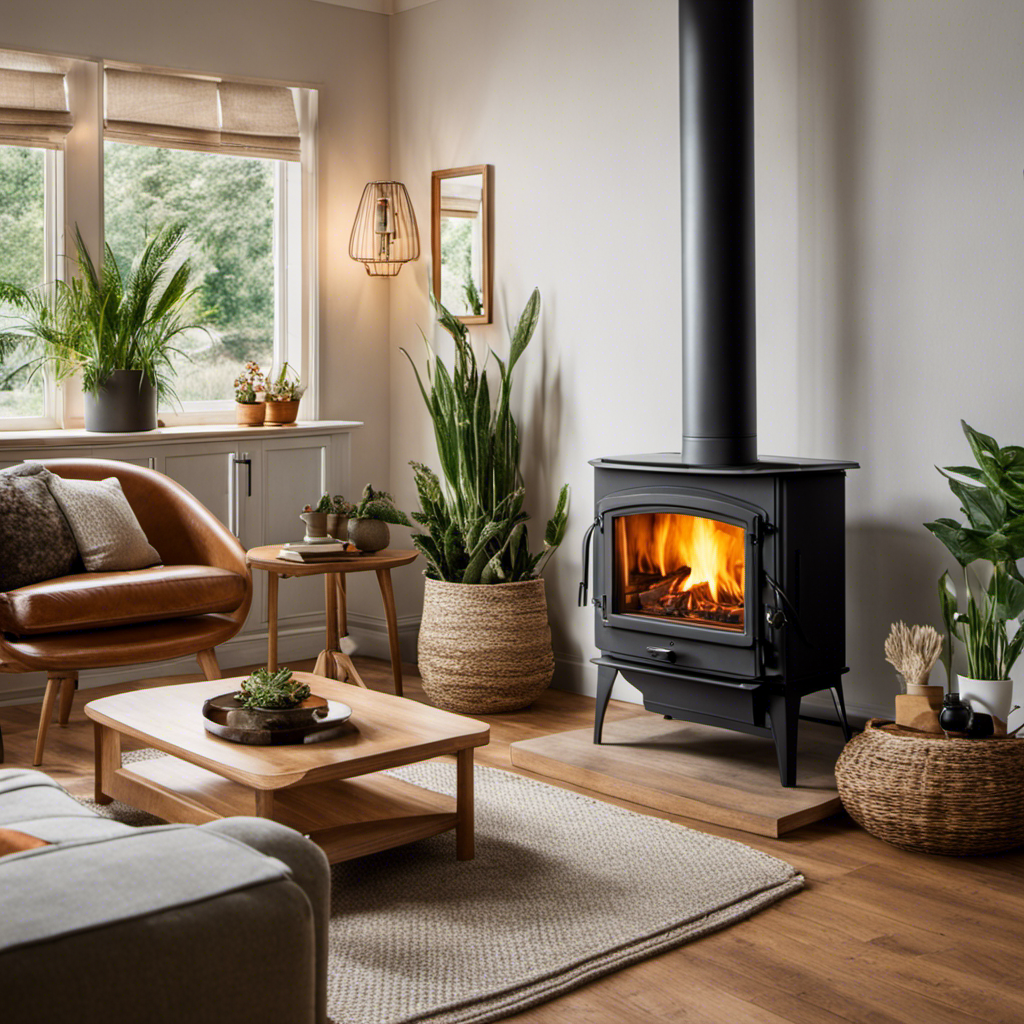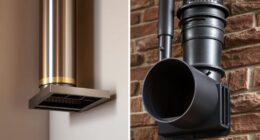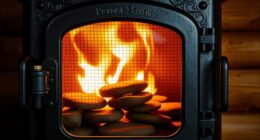Entering the comfortable cabin, a cold shiver runs down my spine. However, there’s no need to worry as I have everything I need to stay warm and cozy.
In this article, I will guide you through the process of lighting up a wood stove. From preparing the stove to igniting the fire and maintaining the flame, I will provide you with the technical know-how and detailed instructions to transform your space into a haven of warmth and relaxation.
Let’s get started!
Key Takeaways
- Ensure the stove is located away from combustible materials.
- Use seasoned firewood with a moisture content of 20% or less.
- Regularly inspect and clean the chimney to prevent creosote buildup.
- Follow lighting techniques for a successful fire start-up.
Preparing Your Wood Stove
I’m getting ready to start a fire in my wood stove, so I need to make sure I properly prepare it.
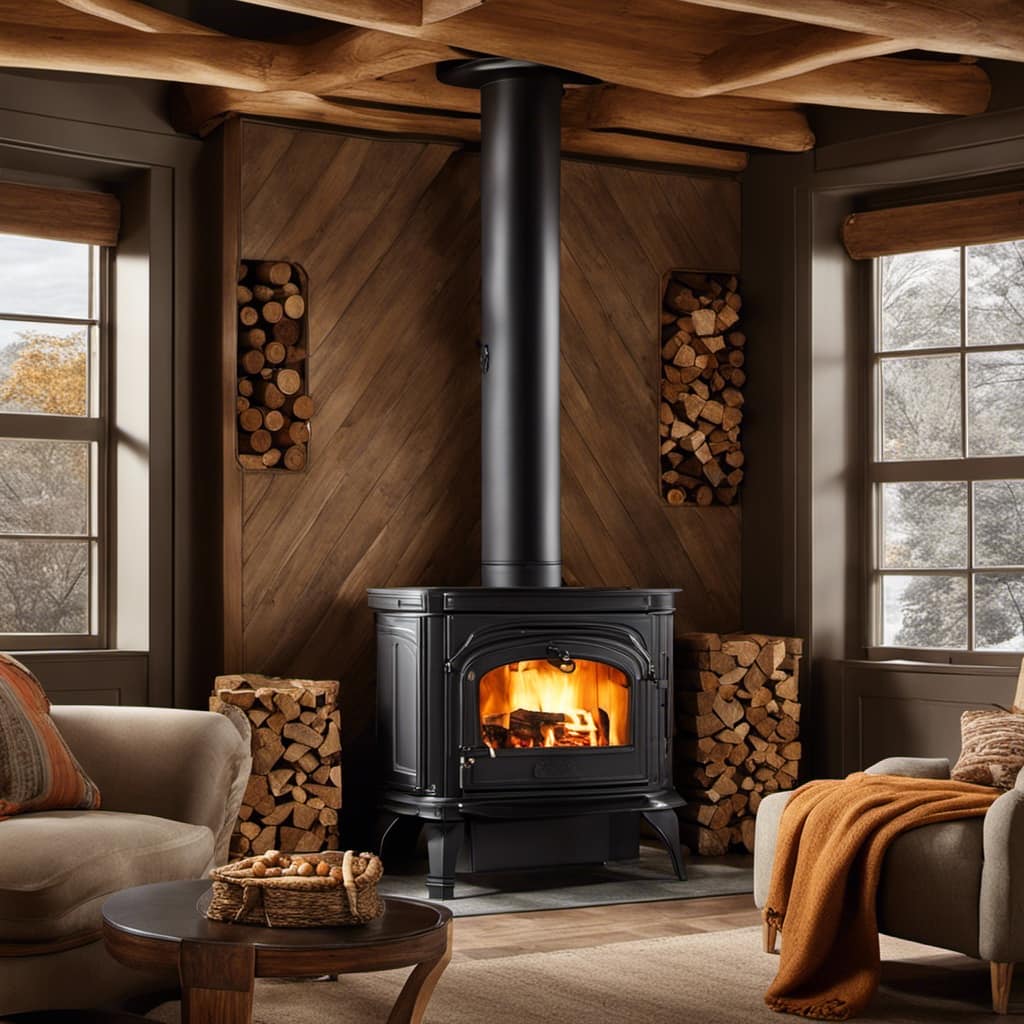
Before lighting up the wood stove, it’s important to take certain safety precautions. Firstly, ensure that the stove is located away from any combustible materials, such as curtains or furniture.
Secondly, check that the chimney is clear of any debris or blockages to prevent smoke from backing up into the house. Additionally, cleaning and maintaining the wood stove regularly is crucial for safe operation. This involves removing ashes from the previous fire and inspecting the stove for any signs of damage or wear.
By following these safety precautions and properly cleaning and maintaining the wood stove, we can ensure a safe and efficient fire.
Now, let’s move on to gathering the necessary supplies.
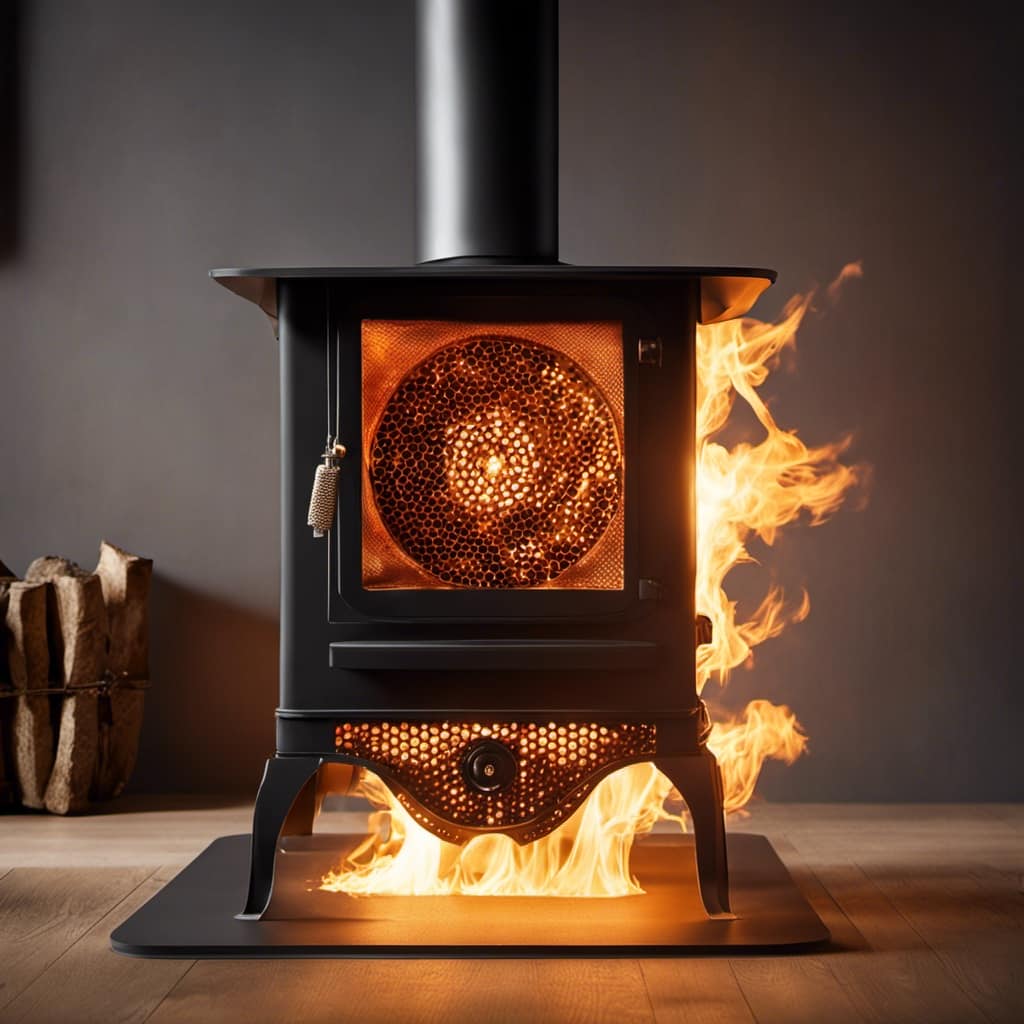
Gathering the Necessary Supplies
Before lighting up the wood stove, it is important to gather the necessary supplies such as firewood and matches. Ensuring wood stove safety is crucial for a successful and hazard-free experience.
To engage the audience, let’s discuss two important sub-topics:
- Choosing the right firewood:
- Hardwoods like oak, maple, or birch are ideal for wood stoves as they provide long-lasting heat and produce less creosote.
- Seasoned firewood with a moisture content of 20% or less is recommended to minimize smoke and maximize heat output.
- Wood stove safety measures:
- Clear the area around the stove from any flammable materials and maintain a safe distance.
- Install a sturdy hearth or floor protection to prevent accidental fires.
- Regularly inspect and clean the chimney to prevent creosote buildup and potential chimney fires.
Building a Proper Fire Lay
To build a proper fire lay, I’ll start by arranging the kindling in a crisscross pattern. This ensures that the fire receives enough oxygen and allows for a steady burn.
It’s important to mention fire safety here, as it’s crucial to keep flammable materials away from the fire and have a fire extinguisher nearby.
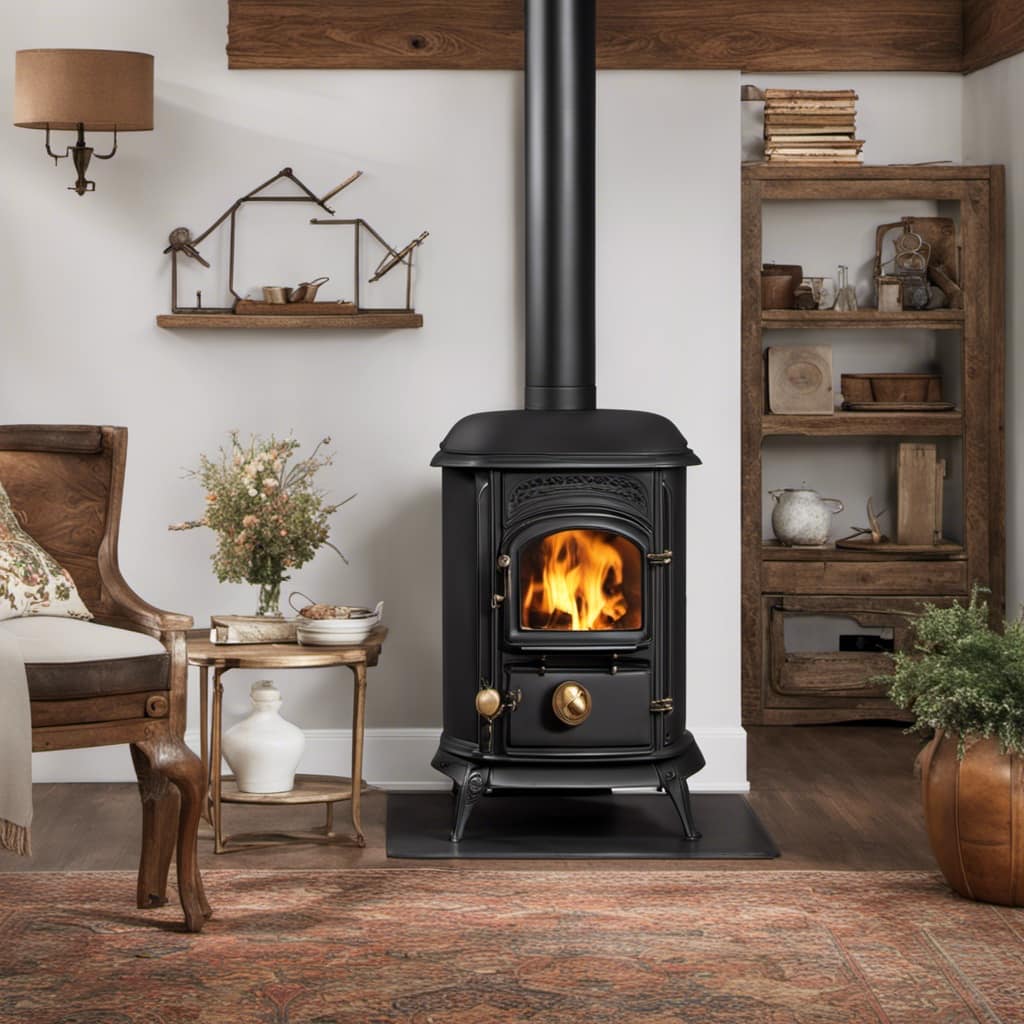
If you’re having trouble getting the fire to ignite, check if the kindling is dry enough or if there’s enough airflow. Troubleshooting is an important aspect of fire building, as it helps identify and solve any issues that may arise.
Once the kindling is properly arranged, it’s time to move on to igniting the fire and watching it grow into a warm and cozy blaze.
Igniting the Fire
After preparing the fire lay, I can use a lighter or matches to ignite the kindling and begin the fire. Lighting techniques are essential to ensure a successful fire start-up.
Here are some safety precautions and tips to consider:
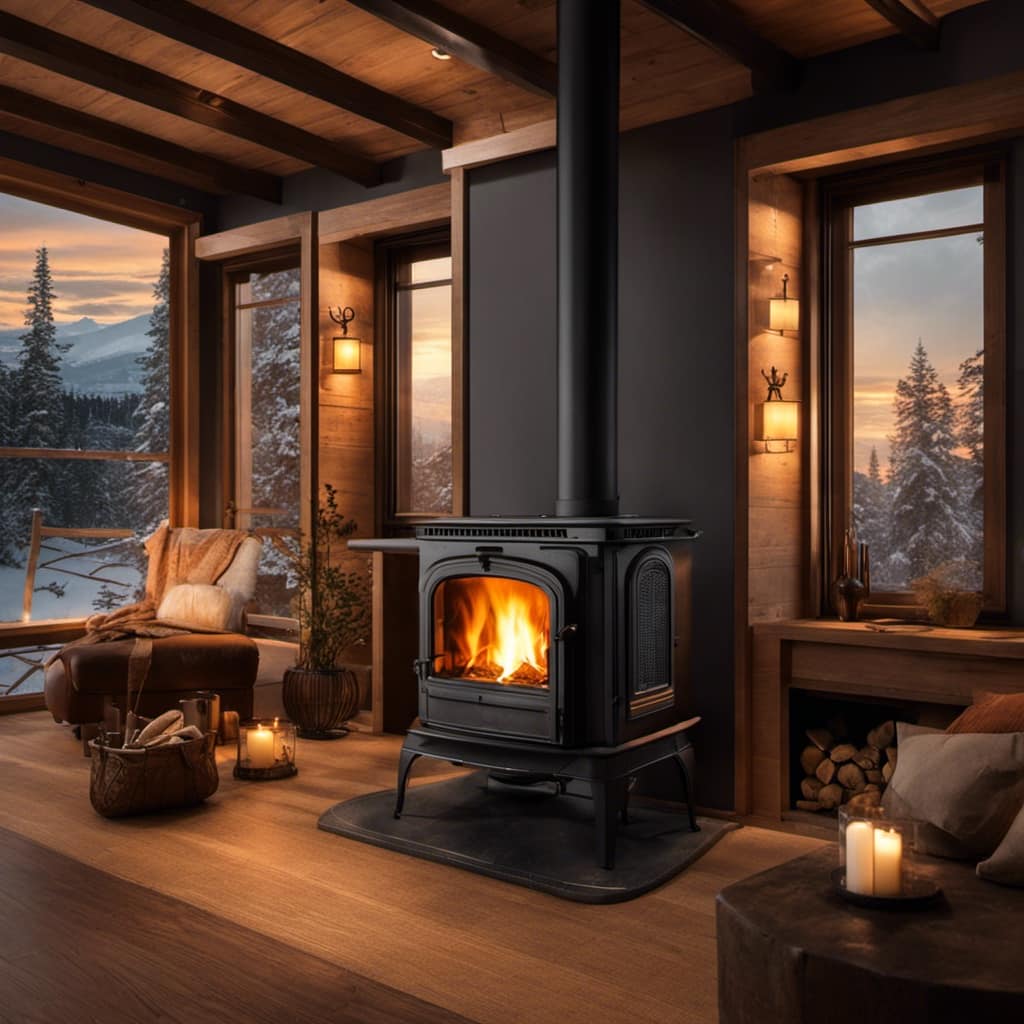
Lighter or Matches
Always use a long-handled lighter or extra-long matches to maintain a safe distance from the flames.
Keep the lighter or matches away from children and pets to prevent accidents.
Fire Extinguisher and Fireproof Gloves
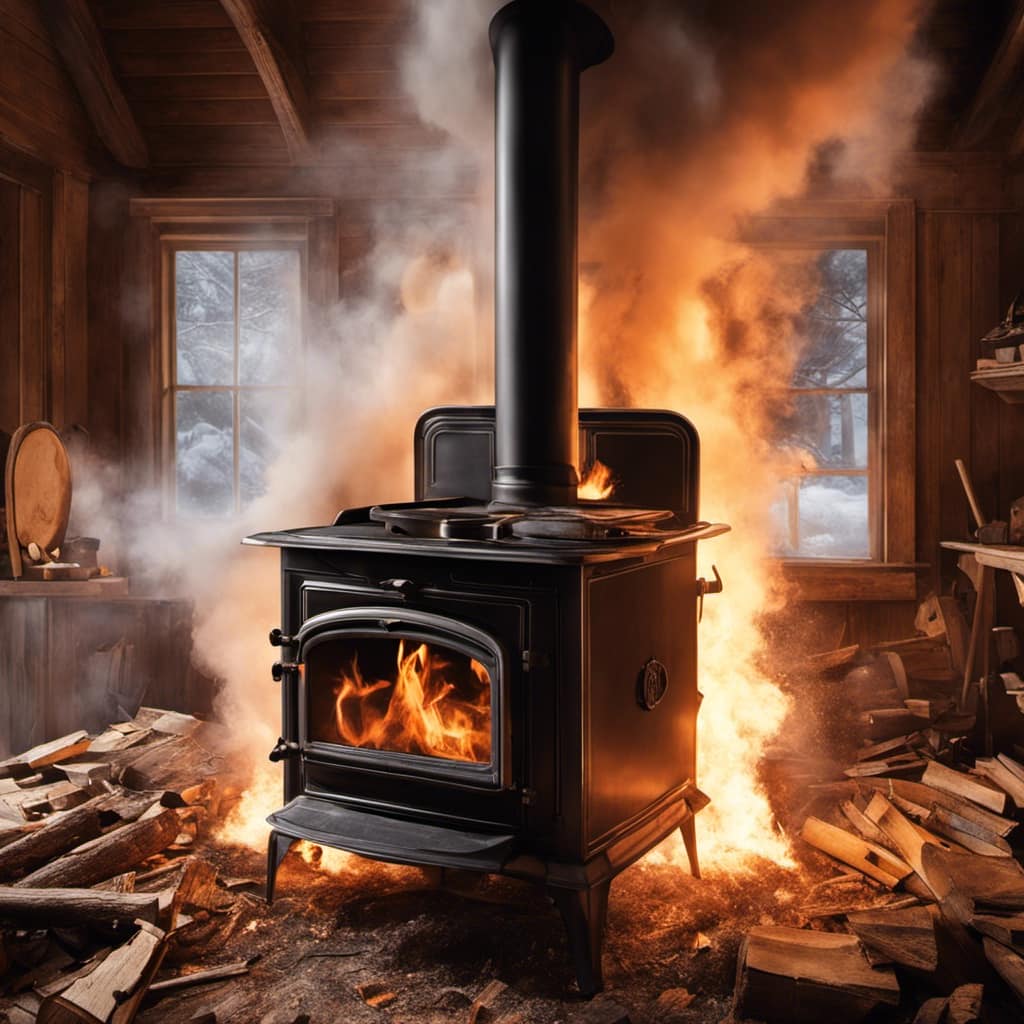
Have a fire extinguisher nearby in case of emergencies.
Wear fireproof gloves to protect your hands from burns when handling flames or hot materials.
Maintaining and Controlling the Flame
I adjust the damper to control the airflow and maintain a steady flame in the wood stove. Maintaining the flame in a wood stove is essential for efficient and effective heating.
If you’re experiencing issues with the flame, here are some troubleshooting tips. First, check if there’s enough fuel in the stove. Insufficient fuel can lead to a weak or extinguished flame.
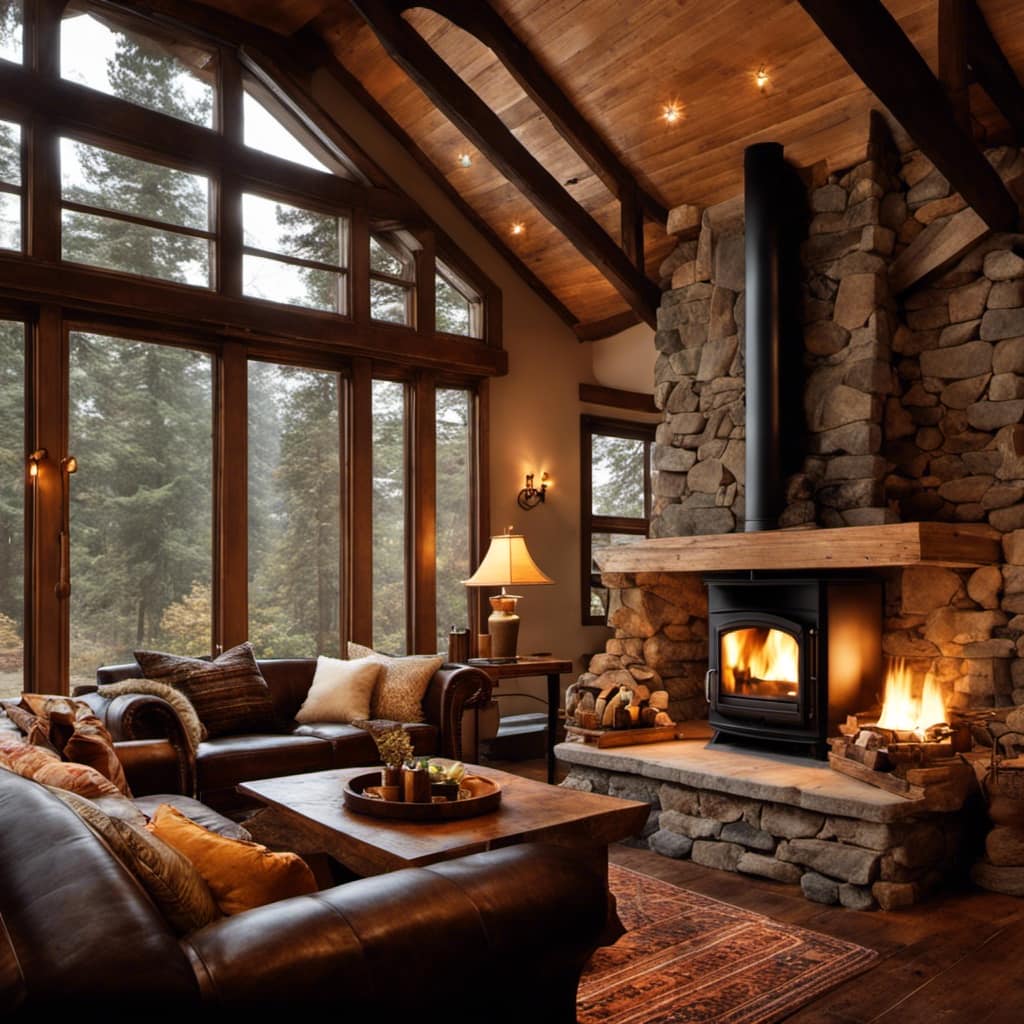
Next, ensure the firewood is dry and properly seasoned. Wet or green wood can produce excessive smoke and a weak flame.
Adjusting the airflow is crucial in controlling the flame and heat output. Opening the damper allows more oxygen to enter, increasing the flame intensity. Closing the damper reduces airflow, resulting in a lower flame.
Is There a Different Technique for Lighting a Wood Stove to Prevent Smoke?
When trying to light a wood stove without smoke, consider using the upside-down method. Start with large logs on the bottom and smaller ones on top. This technique allows for better airflow, resulting in a cleaner burn and less smoke production.
Frequently Asked Questions
How Often Should I Clean My Wood Stove?
I clean my wood stove every three months to ensure proper maintenance. Regular cleaning helps prevent creosote buildup and improves the stove’s efficiency. Make sure to follow the manufacturer’s guidelines for cleaning frequency.
What Are Some Common Mistakes to Avoid When Lighting a Wood Stove?
Common mistakes when lighting a wood stove include using too much newspaper, not opening the damper properly, and neglecting to clean the stove regularly. To ensure safety, follow these precautions.
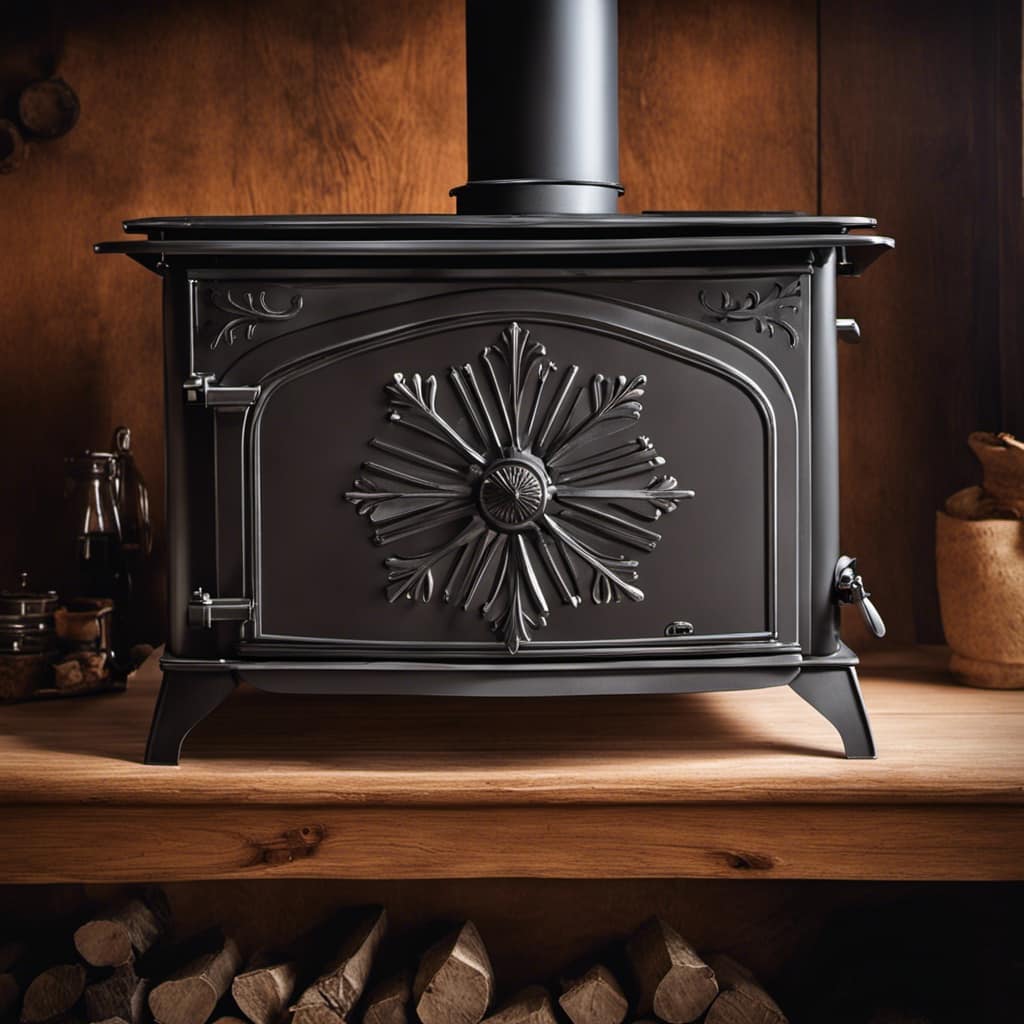
Can I Use Any Type of Wood to Light My Stove?
No, not all types of wood are suitable for lighting a wood stove. It’s important to use dry, seasoned wood that burns easily and produces a good amount of heat.
How Can I Prevent Smoke From Entering My Home When Lighting the Stove?
To prevent smoke from entering my home when lighting the stove, I take safety precautions. Opening the damper fully and priming the flue with newspaper helps create a strong draft, ensuring proper ventilation.
Are There Any Safety Precautions I Should Take When Lighting a Wood Stove?
When lighting a wood stove, it is important to take safety measures and ensure proper ventilation. This helps prevent smoke from entering your home. Remember to follow the manufacturer’s instructions and use fire-resistant materials.
Conclusion
As I carefully place the last log into the wood stove, I can’t help but feel a sense of anticipation. The flickering flames dance across the room, casting a warm glow that fills me with satisfaction.
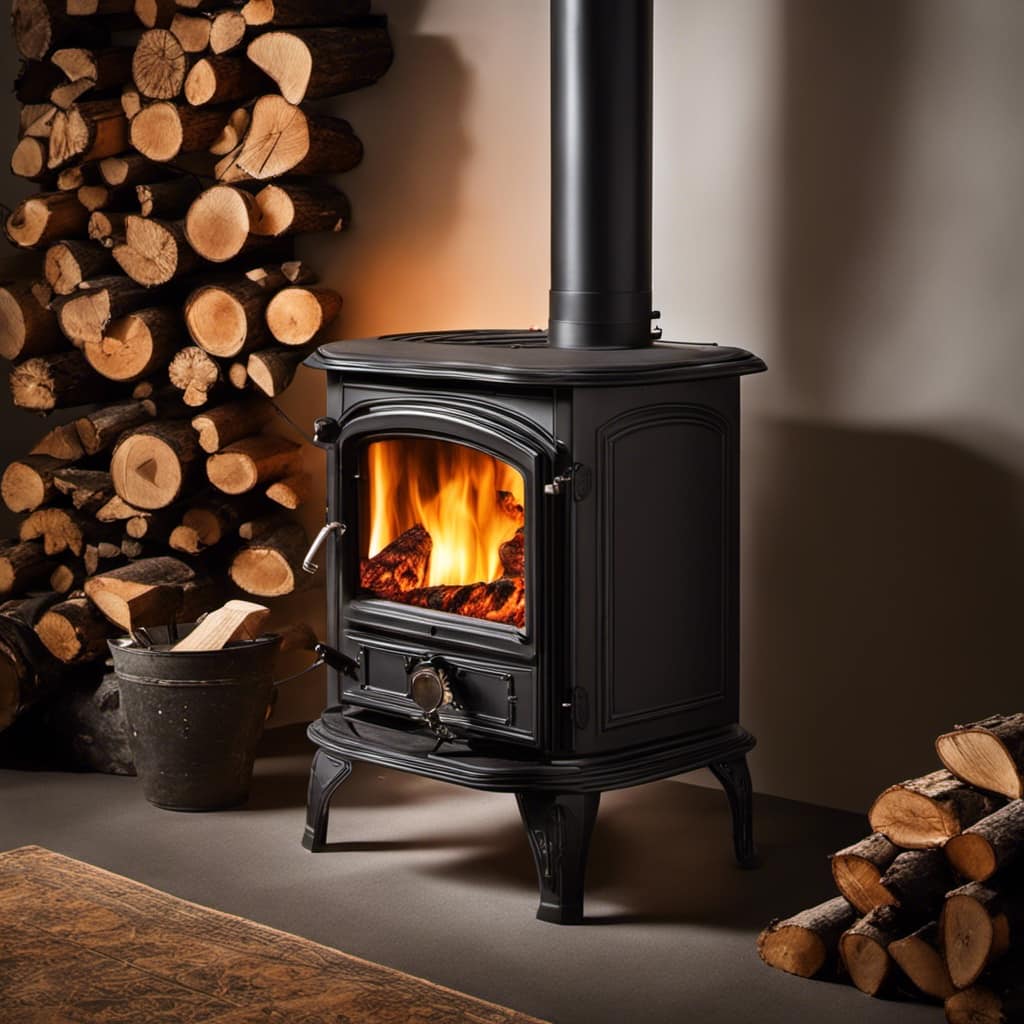
But this is only the beginning. The true test lies in how well I can maintain and control the flame, ensuring a steady heat throughout the night.
With each crackle and pop, I’m reminded of the responsibility that comes with lighting up a wood stove.
Growing up surrounded by the vast beauty of nature, Sierra was always drawn to the call of the wild. While others sought the comfort of the familiar, she ventured out, embracing the unpredictable and finding stories in the heartbeat of nature.
At the epicenter of every remarkable venture lies a dynamic team—a fusion of diverse talents, visions, and passions. The essence of Best Small Wood Stoves is crafted and refined by such a trio: Sierra, Logan, and Terra. Their collective expertise has transformed the platform into a leading authority on small wood stoves, radiating warmth and knowledge in equal measure.





